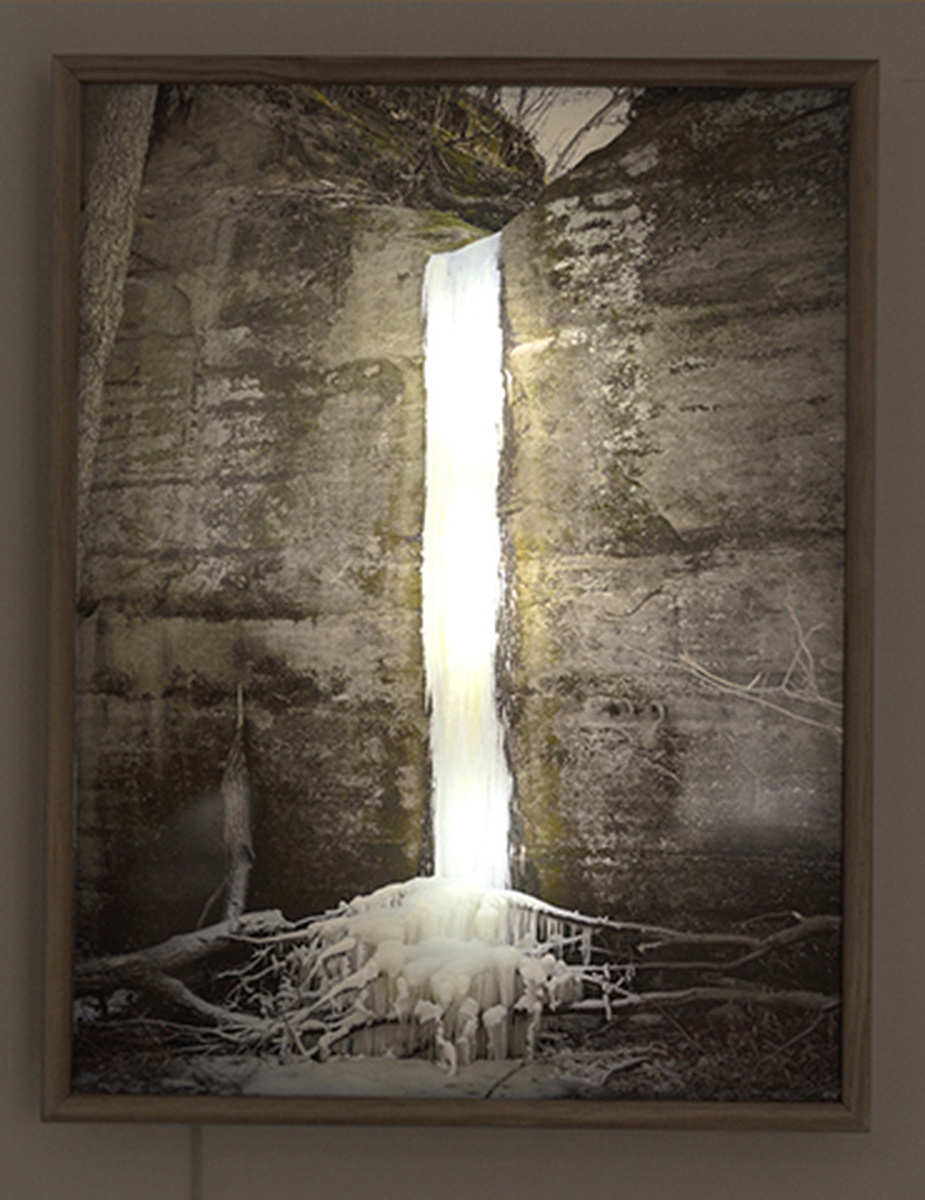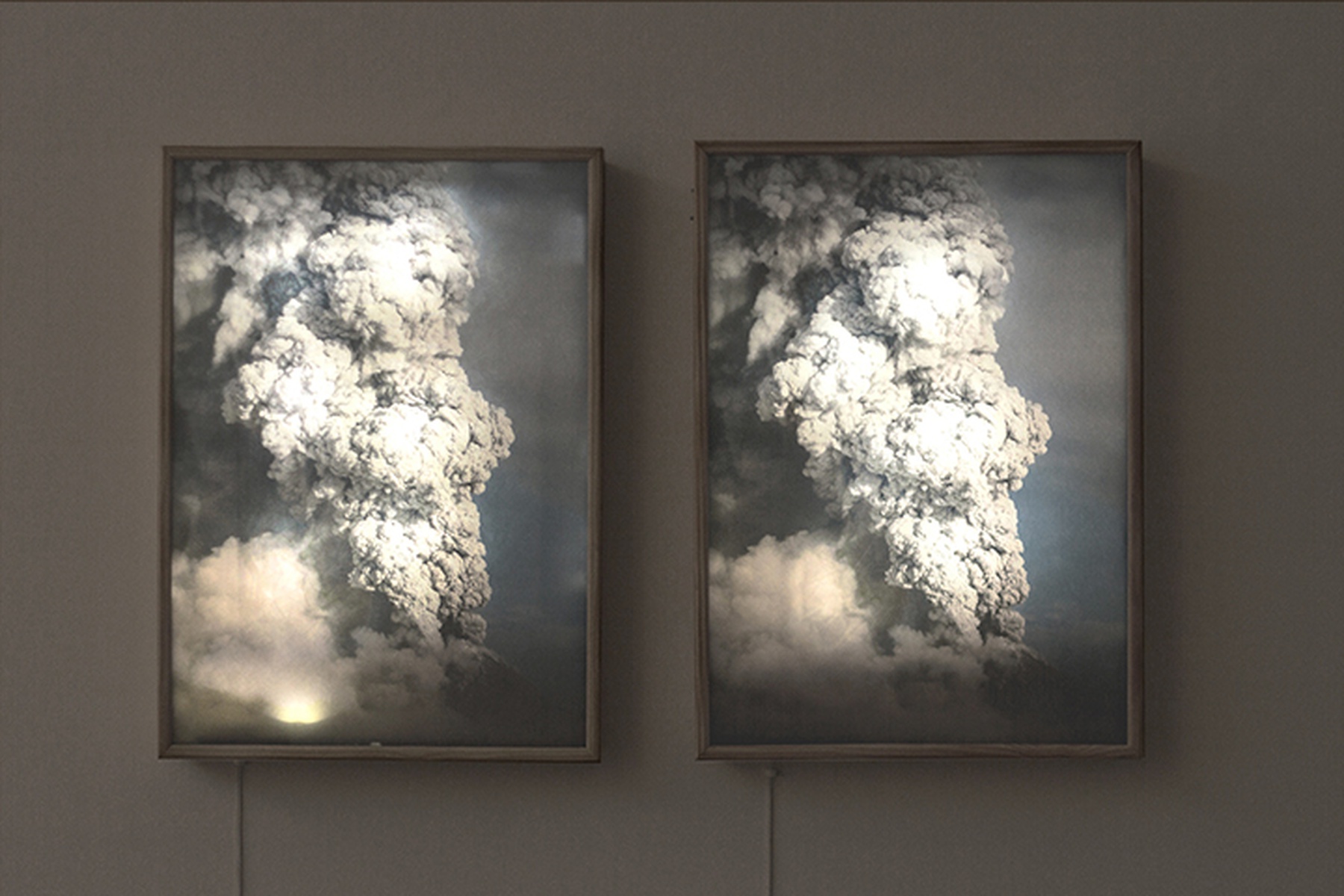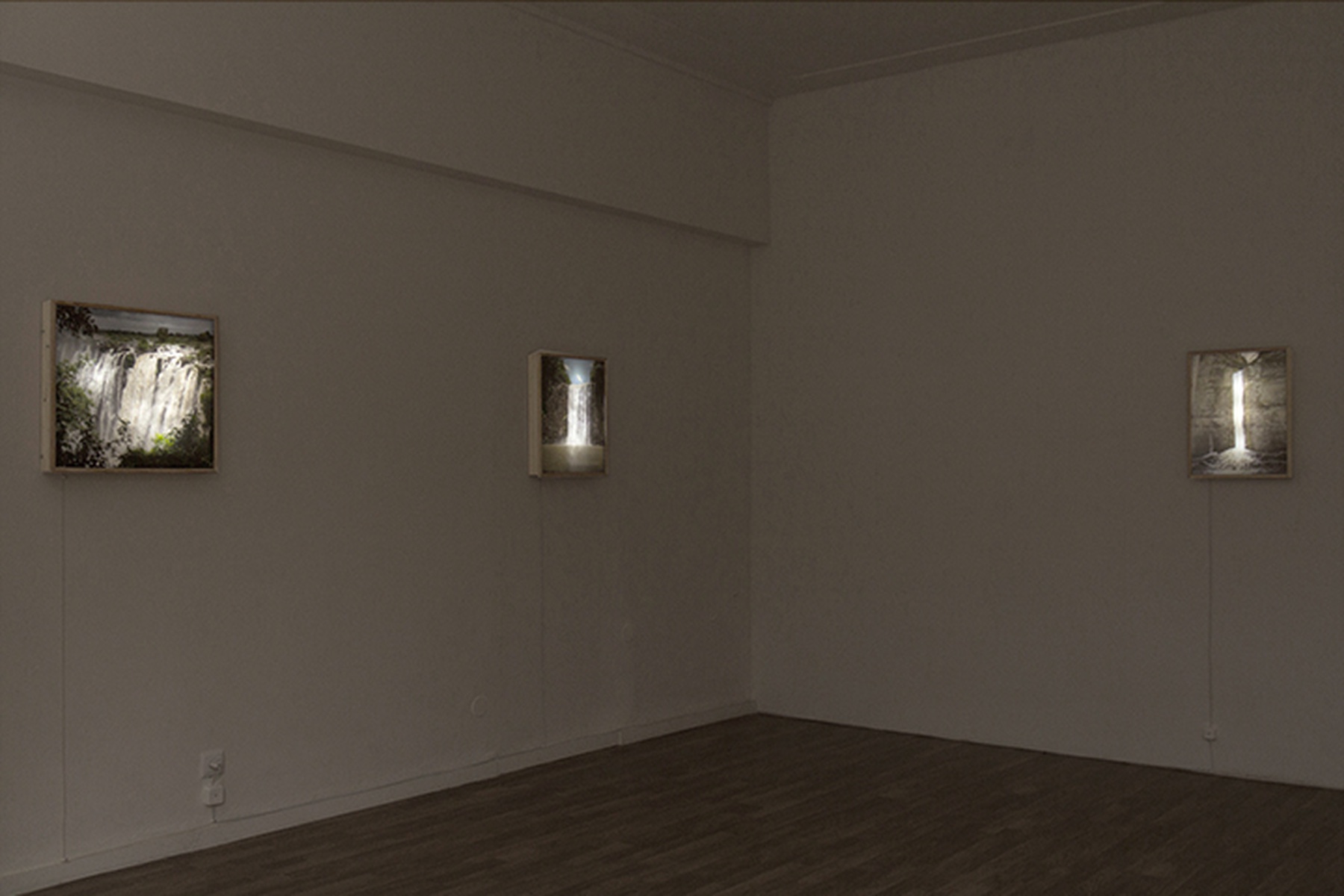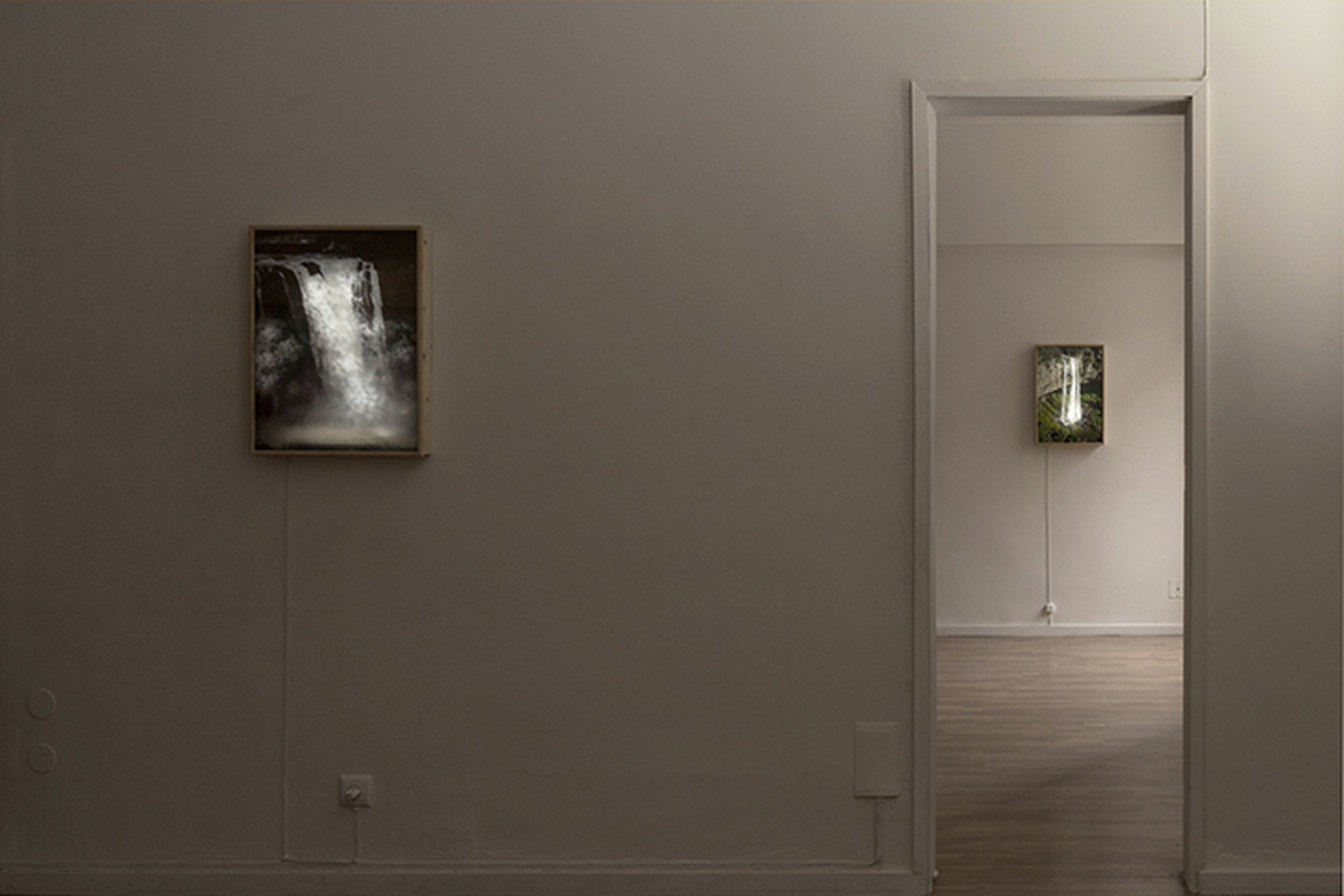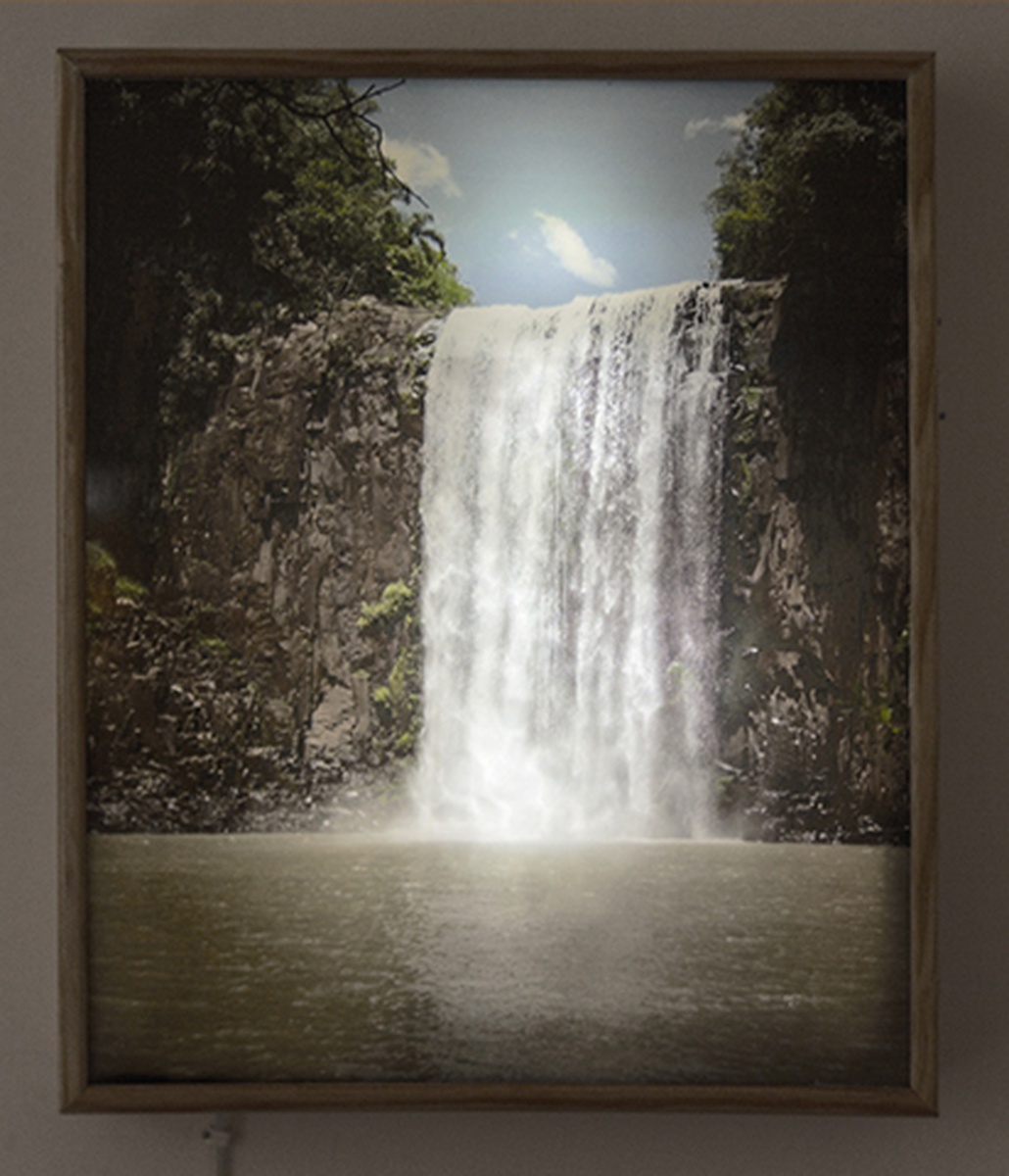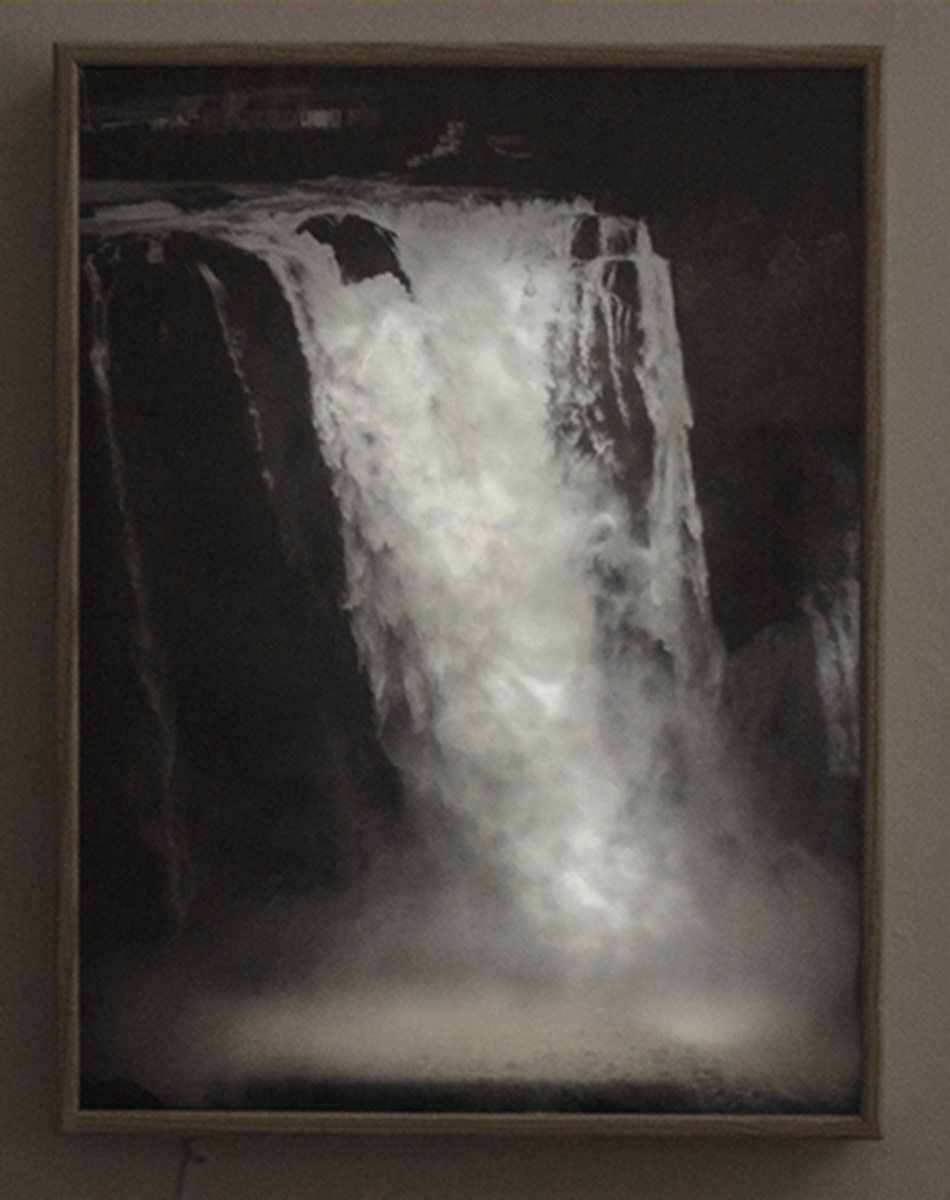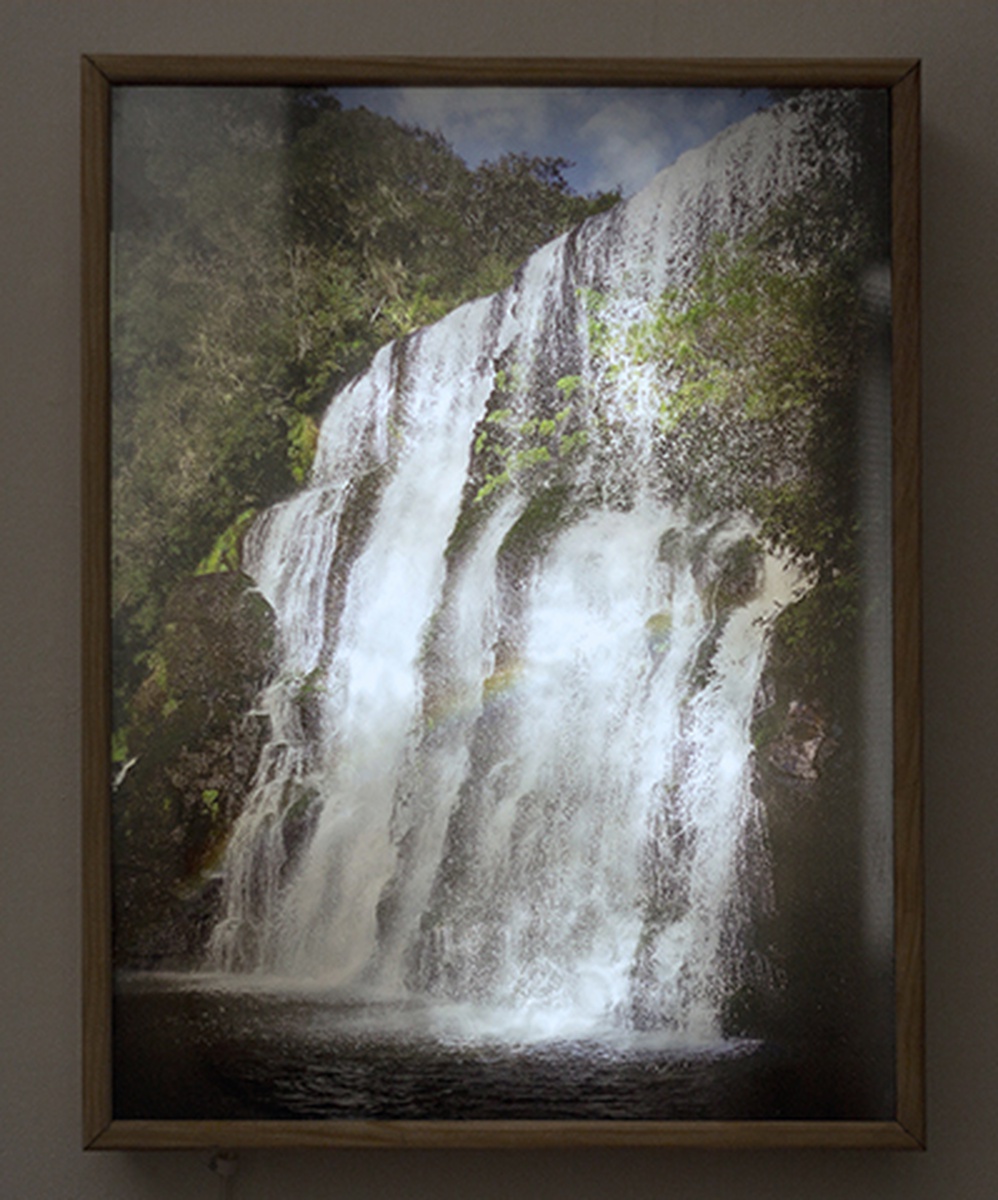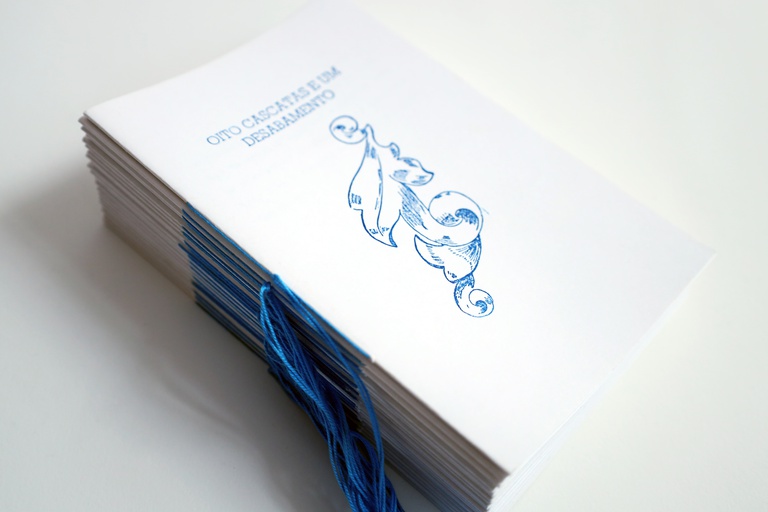Cascades and Collapses
Exhibition
17 Apr – 23 May 2015
Opening
Friday, 17 April 22:00
Free admission
In August 1946, Marcel Duchamp and Mary Reynolds rented a room at the Hotel Bellevue, near Chexbres, Switzerland, at 100 meters from the "counter of the world." If the view they saw was sublime – the designated Lemano small lake and the vineyards of Lavaux – it would have been the sound of a waterfall, the Le Forestay, that grabbed the attention of the artist. A short walk after, there was the cascade, drawing a path shaped like a vulva until it collapses on the slopes where the Dézaley is planted, following its way to Lemano. Duchamp then took seven photographs of the landscape, one of which he would later use in the diorama "Étant donnes: 1º la chute d'eau 2º le gaz d'éclairage".
This little story is completed with another: from the balcony of Bellevue, Duchamp could see Tour-de-Peilz, the village where Gustav Courbet spent, in exile, the last years of his life. The artist more contemporary to us, always maintained a paradoxical position regarding the author of "L' Origine du monde", if on one hand he criticized his sensuality, physicality and the retinal dimension of his works, on the other he could not help but to report his proximity to Courbet in the way he treats eroticism in many of his creative acts – that relation can be detected on the level of voyeurism that both of them always made a point to practice.
The exhibition “Cascades and Collapses” by Renato Ferrão, can be read from this background. Made up of 11 dioramas, which could also be called celibate machines, the show has a double exotic and oriental origin: the acquisition from Mr. Li Yu of an old cascade from the 1970s, which was part of the decoration of a chinese restaurant on Pires de Lima street, Porto, and the encounter of the artist with a cutout of a macanese pin-up glued to a door of a furniture – a carpenter's table – at the storage room of the Electricity Museum in Lisbon. The collision between the image of the model and the waterfall has led to a series of reflections not only about the real/artificial dichotomy, but also and especially on the ways of representation of desire in current art.
Is it not by chance that the cascades that Renato Ferrão has appropriated come from exotic geographies, which are increasingly populated by tourism and public works: in one of the images we see all-terrain vehicles on top of a waterfall, while in another there is a construction site. It is also not fortuitous the inclusion of dioramas of a frozen waterfall – the postponed desire –, or of a volcano – the consummated desire. Between the fall and rise, both laid bare, between heaven and catastrophe, this exhibition is a machinery, a complex work built piece-by-piece, manually. There is a reversal of roles: it is the celibate, the artist, who undresses before us, spectators.
If in Duchamp 150 watts illuminated a hairless vulva, here is LEDs that indicate the water, the smoke, the foam, emphasising the eroticism of landscapes in motion. Another time, another saving (of energy). The frozen cascade is the one that echoes in the remaining images of this exhibition – isn’t photography nothing but the freezing of an instant? The engines help creating in the other objects the illusion of a perpetual present, although sometimes a failure might happen. It is Jean-Francois Lyotard who tells us: “Interpreting is futile. As far as wanting to limit the true effect of the 'Grand Verre', and thus the actual content; "Verre" is made precisely for not having a real effect, not even some real effects, according to a mono- or polyvalent logic, but rather uncontrolled effects: now, not only the real is the controllable, but also the false, considering that Duchamp aims at a space beyond the truth values: unpower ["impouvoir "] and power."
The exhibition of Renato Ferrão is accompanied by a publication (limited edition of 100 copies). This booklet is the result of an ethnographic collection of traditions, rites and customs associated with the natural and gushing elements of the cascades. The artist, who witnessed all this in loco, reunited these exemplary tales in this edited anthology.
Exhibition
17 Apr – 23 May 2015
Opening
Friday, 17 April 22:00
Free admission

